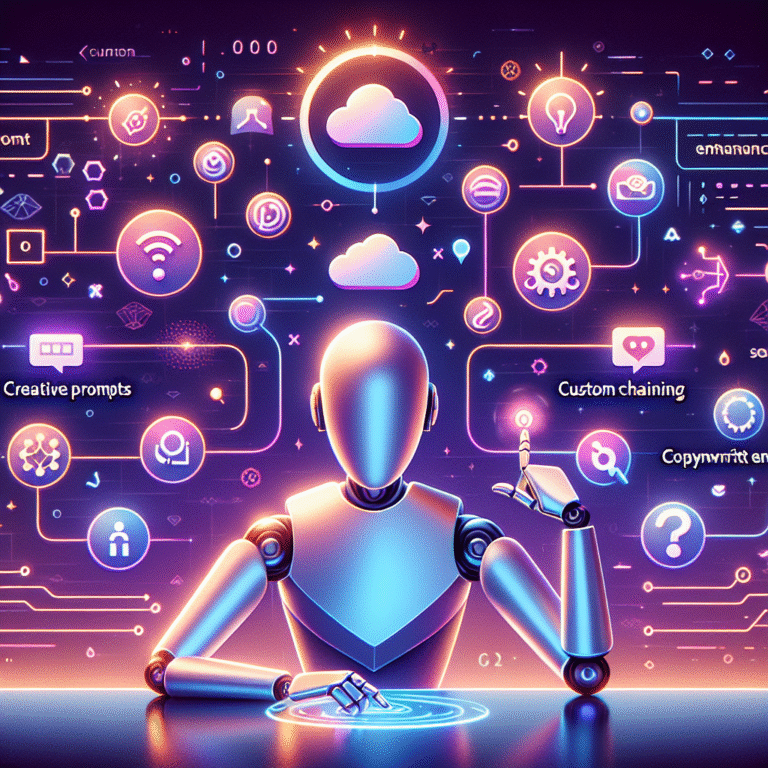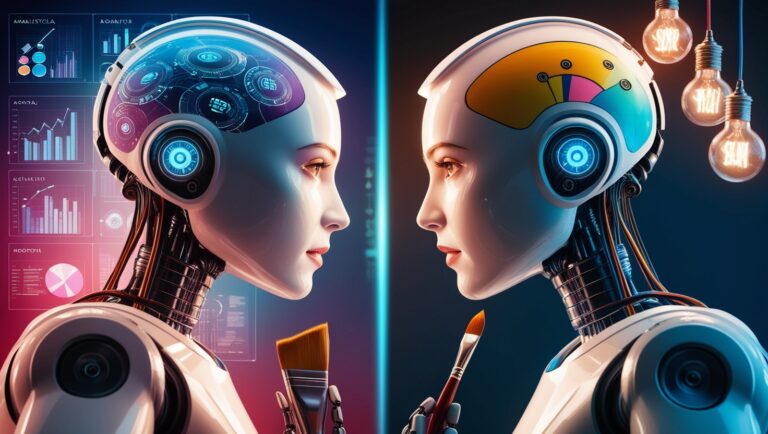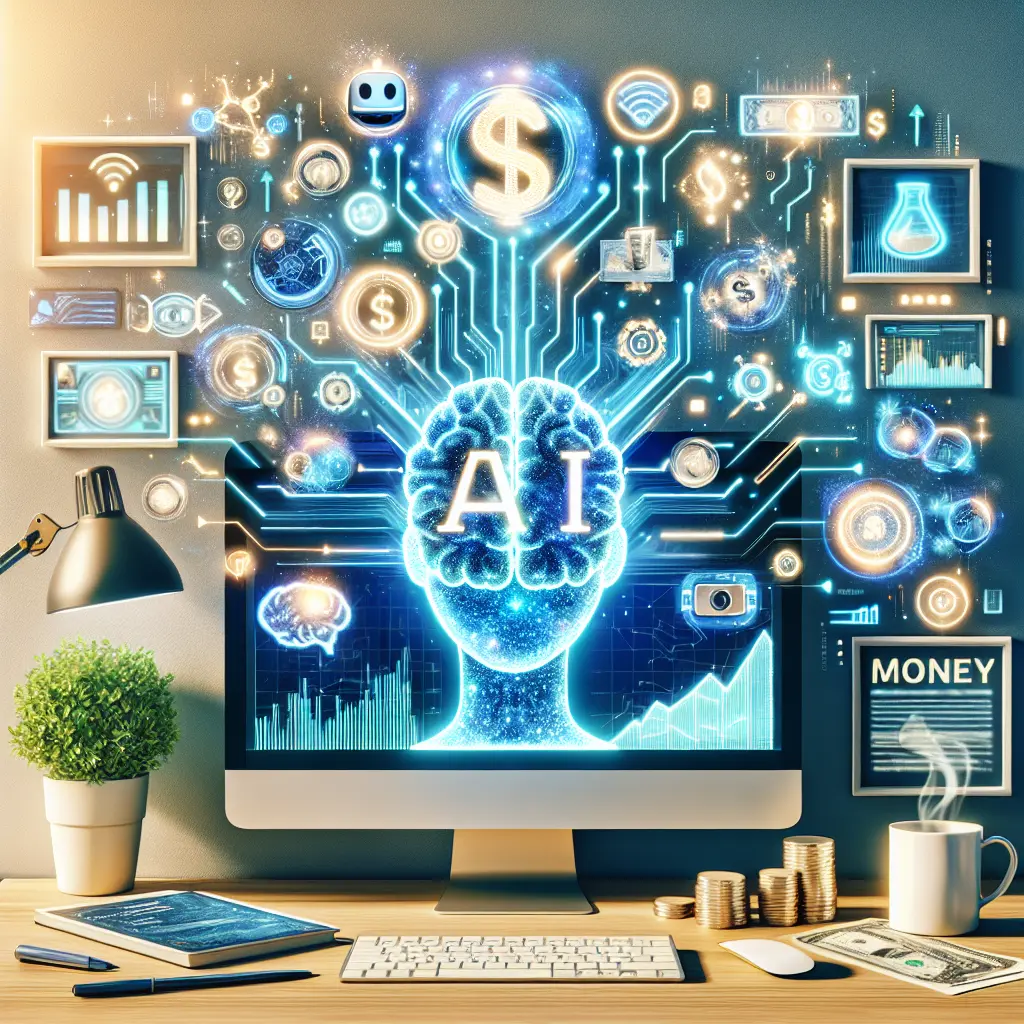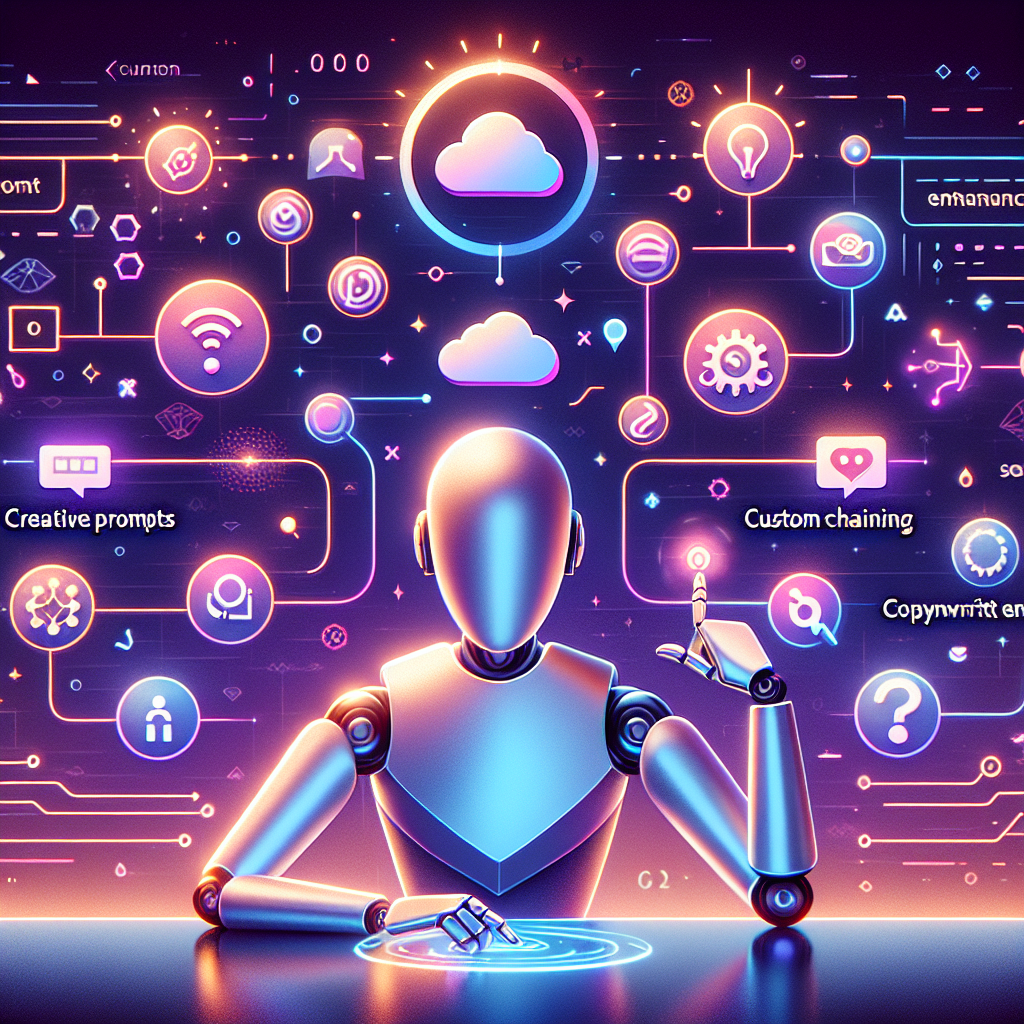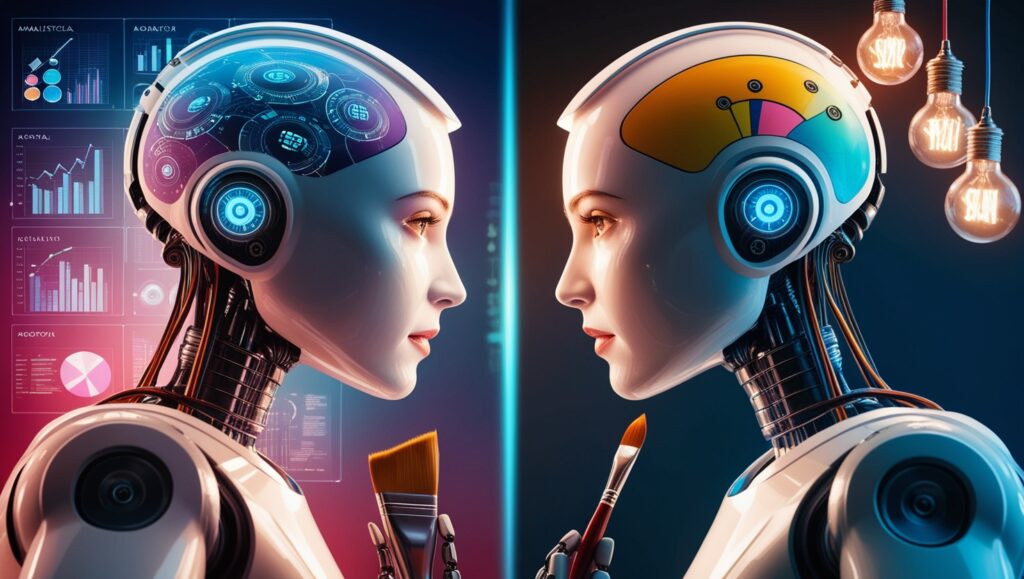The home care industry is facing a big crisis. This is due to changes in demographics, longer life spans, and more chronic illnesses.
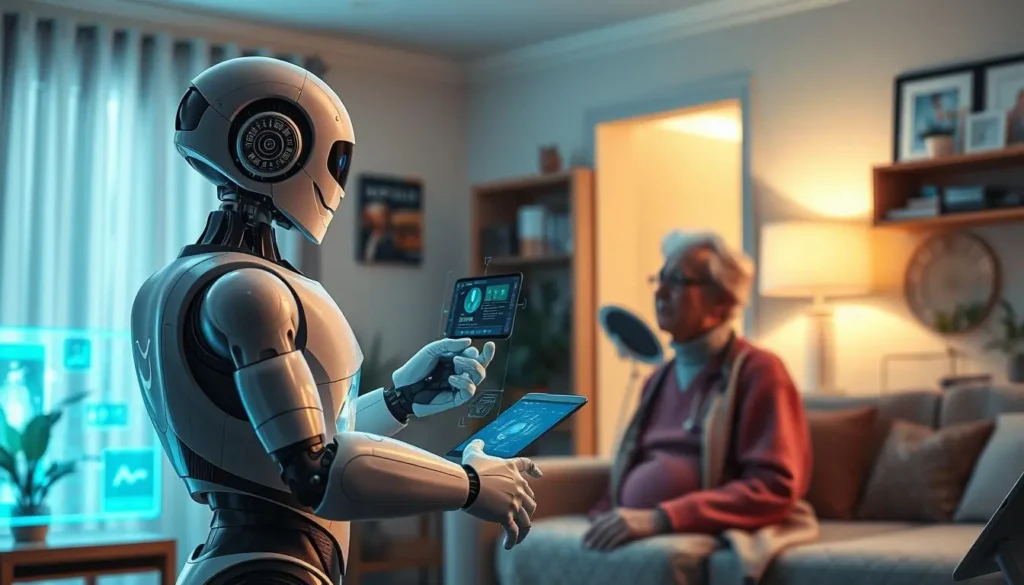
Technology is being seen as a key to solving this problem. It can make care more efficient and tailored to each person’s needs.
As we deal with the challenges of healthcare today, AI’s role in home care is becoming clearer. It offers a way to make care better and more effective.
Table of Contents
The Evolution of Home Healthcare
Home healthcare has grown to meet new challenges and opportunities. It has evolved to deliver care right in patients’ homes. This change has brought many advancements in how care is given.
Traditional Home Healthcare Models
Older home healthcare models mainly offered basic medical care and help with daily tasks. Nurses and home health aides visited patients to provide these services. But these models are struggling to keep up with today’s needs and demands.
Current Challenges Facing Home Healthcare Providers
Home healthcare agencies face big challenges that affect care quality and access. Staffing shortages and burnout, along with rising care costs, are major issues.
Staffing Shortages and Burnout
Staffing shortages and burnout are big problems. There’s a high demand for healthcare workers, leading to burnout. This hurts care quality and makes staffing issues worse.
Rising Costs of Care Delivery
The cost of care is going up. As more people need home healthcare, costs rise. These costs come from needing skilled workers, advanced equipment, and technology for remote monitoring.
The Importance of AI in Home Healthcare
AI is becoming key in home healthcare as more people need care at home. It helps doctors, nurses, and caregivers do their jobs better. This leads to better care for patients.
Also Read: Top 5 Home Care Trends You Can’t Afford to Miss in 2025
Defining AI Technologies in Healthcare Context
AI in healthcare uses smart algorithms and learning to analyse data. It makes predictions and gives insights for better healthcare decisions. At home, AI can watch over patients, spot problems early, and make care plans better.
Also Read: Health Life AI: 10 Powerful Ways to Boost Wellness
How AI Addresses Critical Home Healthcare Needs
AI meets home healthcare needs in big ways. It improves patient results and lessens the load on caregivers.
Improving Patient Outcomes
AI analyses data from many sources to detect health risks early. It uses medical records, wearables, and sensors to help prevent problems before they start.
Reducing Caregiver Burden
AI tools also ease caregivers’ work. They automate tasks, offer support in real time, and provide insights, allowing caregivers to focus on providing better care.
Using AI, we can make home healthcare better for everyone. It helps patients and caregivers alike.
AI-Powered Remote Patient Monitoring
AI-driven remote patient monitoring is transforming home healthcare. It allows for constant monitoring and support. Healthcare providers can track patients’ vital signs and health status in real-time. This makes it easier to intervene quickly.
Continuous Health Data Collection Systems
Collecting health data continuously is key for remote patient monitoring. This is done with various devices and sensors. They track vital signs and other health metrics.
Wearable Health Monitors
Wearable health monitors are essential for remote patient monitoring. They track vital signs like heart rate, blood pressure, and oxygen saturation. This gives healthcare providers real-time data.
Smart Sensors and Environmental Monitoring
Smart sensors and environmental monitoring systems track environmental factors. These include temperature and humidity. This helps healthcare providers spot health risks early and act fast.
Real-time Health Analytics and Alerts
AI-powered systems analyze data in real-time. They send alerts and notifications for health issues. This lets healthcare providers act fast, improving care and reducing hospital visits.
AI technology boosts patient care, mainly for the ageing population. It offers constant support and early intervention. The use of IoT devices in home healthcare makes care more detailed and tailored.
Machine Learning for Predictive Healthcare
AI is changing healthcare, and machine learning is key. It looks at lots of data to find patterns and predict what might happen to patients. This helps doctors act before problems start.
Early Detection of Health Deterioration
Machine learning helps spot early signs of health problems. AI looks at data from wearables and what patients say. This way, doctors can act fast.
Preventing Hospital Readmissions
Machine learning is also great at stopping hospital readmissions. It finds patients at risk and helps doctors act just in time. This cuts down on readmissions.
Identifying High-Risk Patients
Machine learning looks at past and current data to find patients at risk. This lets doctors focus on them more and help them better.
Intervention Timing Optimization
Machine learning predicts when problems might happen. This means doctors can give care when it’s most needed. It’s all about timing.
Smart Home Integration for Elderly Care
Smart home technology is changing how we care for the elderly. It makes care more personal and efficient. This change comes from IoT devices and voice-activated systems, improving seniors’ lives.
Enhancing Home Safety with IoT Devices
IoT devices are key in making homes safer for the elderly. They can spot falls, watch the environment, and send alerts in emergencies. This tech greatly lowers the risks of ageing.
Some important IoT devices for safety include:
- Fall detection sensors
- Smart door locks
- Environmental sensors (e.g., temperature, smoke detectors)
Also Read: 14 AI Code Generators to Boost Developer Productivity
Voice-Activated Assistance Systems
Voice-activated systems are vital for elderly care in smart homes. They let seniors control their space, get info, and talk to others with voice commands.
Medication Reminders
Voice systems are great for reminding seniors to take their meds. This helps them stick to their schedules, boosting their health.
Emergency Communication
These systems also let seniors call for help fast in emergencies. This gives them and their families peace of mind.
| Feature | Benefit | Example |
|---|---|---|
| Fall Detection | Immediate Alert in Case of Fall | Sensor detects a fall and alerts the caregiver |
| Medication Reminders | Improved Medication Adherence | Voice assistant reminds the senior to take medication |
| Emergency Communication | Quick Access to Help | A senior uses voice command to call for emergency assistance |
By using these technologies, we can make homes safer and more supportive for the elderly. This lets them live independently for longer.
AI Solutions for Medication Management
AI is changing how we manage medication at home. It’s making care better and saving money.
Automated Dispensing Systems
AI helps with automated dispensing systems. These systems give the right medicine at the right time. They cut down on mistakes made by people.
Adherence Monitoring and Intervention
AI tracks how well patients stick to their meds. It sends reminders and alerts to help. This keeps patients on track.
Personalized Reminder Protocols
AI makes reminders just for each patient. They can get messages by text, email, or phone. It’s all about what they need.
Medication Interaction Warnings
AI checks for drug interactions. It warns doctors about possible problems. This helps avoid bad reactions.
| AI Solution | Description | Benefit |
|---|---|---|
| Automated Dispensing Systems | Dispense medication according to patient needs | Reduces human error |
| Adherence Monitoring | Tracks patient adherence to medication | Improves patient outcomes |
| Personalized Reminder Protocols | Sends reminders tailored to patient needs | Enhances patient engagement |
| Medication Interaction Warnings | Identifies possible drug interactions | Prevents adverse reactions |

Enhancing Patient-Provider Communication
AI is changing how patients and doctors talk to each other. This change is key for home healthcare. Clear and quick communication can greatly help patients.
AI-Powered Telehealth Platforms
AI telehealth platforms lead this change. They use virtual assistants and chatbots for easy communication. These tools help keep an eye on patients and offer help when needed.
Virtual Health Assistants and Chatbots
Virtual assistants and chatbots are becoming more common. They help with simple questions and complex health checks.
Symptom Assessment Tools
Symptom tools are a big part of these systems. They let patients share their symptoms and get quick feedback. This can lead to faster help and better health.
Care Plan Adherence Support
Support for the following care plans is also important. It includes reminders and educational materials. These help patients stay on track with their care.
These AI solutions are making communication better. Patients are getting better care, and doctors can respond more effectively. Everyone benefits from this change.
- AI-powered telehealth platforms enhance patient-provider communication.
- Virtual health assistants and chatbots support patient care.
- Symptom assessment tools and care plan adherence support improve patient outcomes.
Cost-Effectiveness of AI in Home Healthcare
AI is making home healthcare more affordable. It helps healthcare providers cut down on hospital stays and make care more efficient. This leads to better care for patients.
Reducing Unnecessary Hospitalizations
AI can spot health problems early. This means doctors can act fast to stop hospital visits. It’s good for patients and saves money too.
Optimizing Caregiver Workflows
AI makes it easier for caregivers to do their jobs. It helps plan their work better and schedule them well. This cuts down on costs.
Resource Allocation Improvements
AI helps us use resources better. It finds out where help is needed most. This makes sure everyone gets the care they need.
Staff Scheduling Optimization
AI plans when caregivers should work. It matches the right caregiver with the right patient. This makes care more effective.
| Benefits | Description | Impact |
|---|---|---|
| Reduced Hospitalizations | Early detection and intervention | Improved patient outcomes and reduced costs |
| Optimized Caregiver Workflows | Streamlined resource allocation and staff scheduling | Reduced operational costs and improved efficiency |
AI’s Role in Supporting Ageing in Place
AI technologies are changing how seniors live at home. They give seniors tools to stay independent. As we add AI to home care, seniors can live better and safer.
Maintaining Independence for Seniors
Keeping seniors independent is key to their happiness and dignity. AI systems watch over daily activities and health. They also help with tasks like scheduling and home control.
Fall Detection and Emergency Response Systems
Fall detection and emergency systems are vital in AI home care. They spot fall and call for help. This ensures quick medical help and peace of mind for everyone.
Automated Alert Protocols
Automated alerts notify caregivers or family in emergencies. These alerts are set up based on the senior’s needs. This way, the right people get help when needed.
Caregiver Notification Systems
Caregiver systems work with alerts to keep caregivers updated. This lets them act fast and help seniors more. It supports seniors’ independence.

Implementation Challenges and Solutions
Home healthcare providers face many challenges when using AI. They need to solve these problems to make AI work well in home care.
Technology Adoption Among Elderly Populations
Getting older people to use AI is hard. Many seniors don’t know how to use AI devices. This makes it tough for them to use these technologies.
Integration with Existing Healthcare Systems
Another big challenge is fitting AI into current healthcare systems. It’s about making sure AI works well with what we already have.
Interoperability Issues
When systems can’t talk to each other, it’s a problem. This creates data silos and makes AI hard to use in home care.
Staff Training Requirements
Training healthcare staff is key. They need to learn how to use AI devices and understand the data they provide.
By tackling these challenges and finding good solutions, we can make AI work well in home healthcare.
Ethical Considerations and Privacy Concerns
AI is now a big part of home healthcare. But we face big challenges like keeping data safe and finding the right mix of tech and human touch.
Data Security in Home Healthcare AI
Keeping patient data safe is key. AI systems in home care need strong security to guard personal information.
Balancing Automation with Human Care
AI helps a lot in home care. But we must make sure tech and human care go hand in hand.
Maintaining the Human Touch
Human caregivers offer emotional support and empathy. These are things AI can’t do yet.
Addressing Algorithm Bias
AI algorithms must be fair. They need to ensure everyone gets the same care, without bias.
Conclusion
AI is changing home healthcare in big ways. It’s making care better, easier for caregivers, and cheaper. New AI tools like remote monitoring and smart homes are making a big difference.
AI’s role in home healthcare is huge. It helps doctors give care that’s just right for each patient. This leads to better health for everyone. But we need to work on making AI work well and safely in healthcare.
In the end, AI is key to the future of home healthcare. Using AI can make care better, more affordable, and focused on the patient. Let’s keep working on AI to make home healthcare even better.
FAQ
What is the role of AI in home healthcare?
AI is changing home healthcare in big ways. It helps patients get better care at home, makes life easier for caregivers, and saves money. We’re using AI to meet important needs and make care better.
How is AI being used in remote patient monitoring?
AI helps track health data from home. It sends alerts to doctors in real-time. We use smart devices to keep patients healthy.
What are the benefits of AI in medication management?
AI helps manage meds by automating systems and tracking use. It also sends reminders. This reduces mistakes and helps patients get better.
How is AI supporting ageing in place?
AI helps seniors stay independent at home. It detects falls and sends help when needed. AI also sends alerts to keep seniors safe.
What are the challenges facing the implementation of AI in home healthcare?
Using AI in home care has its hurdles. It’s hard to get older folks to use new tech. Also, fitting AI into current systems and making sure they work together is tough. We’re working hard to overcome these issues.
How is AI improving the cost-effectiveness of home healthcare?
AI cuts down on hospital stays and makes care more efficient. It helps caregivers work better and use resources wisely. This saves money and improves care.
What are the ethical considerations associated with AI in home healthcare?
AI raises big questions in home care. Like keeping data safe, making sure humans are involved, and avoiding bias. We’re tackling these issues to use AI right.
How is AI-enhancing patient-provider communication?
AI makes talking to doctors easier with virtual assistants and chatbots. It helps patients get the care they need. We’re using AI to make care better.
What is the future of home healthcare with AI?
The future looks bright with AI in home care. AI will keep getting better and help patients more. We’re excited to use AI to change home care for the better.




